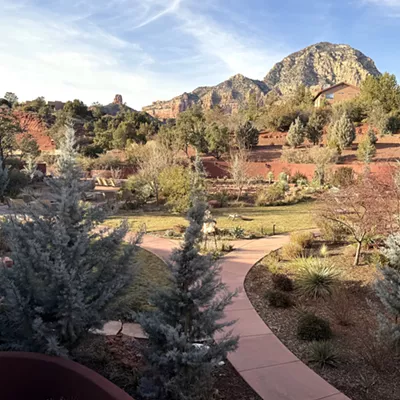The local John Brown Party communes over lentil-and-rice soup and takes its riot from the streets into the kitchen, forming a buying club.
Buying clubs often become food co-ops. After all, a buying club is kind of like a storefront-less cooperative. It is a bunch of people buying certain items in large enough quantities to get sizable discounts. They then divvy up the goods. Out of this buying club comes a full cooperative with a storefront, buying, storing and selling food. Unlike many cooperatives of the '70s, this effort, the Food Conspiracy, is going to make it--and 30 years later, the Food Conspiracy is the only co-op to retain such a provocative name.
That small food co-op set out to kick Campbell's "right out of their can," says a 1975 newsletter, objecting to agribusiness welfare that isn't in the best interest of health and freshness: "We are paying in taxes money to make them more efficient. About $600 million from the government is used for agricultural research each year. We paid for the development of a tough, firm, thick-skinned tomato capable of withstanding the bumps and pressures of machine harvesting, mechanically picked and ripened by ethylene gas. At the University of Georgia they use tax money to defuzz peaches and coat them with water-soluble wax containing fungicide to prolong their shelf life."
If you were to walk into the Food Conspiracy in 1971, you would have been in one small room with a box for a cash register. There were no Chinese herbs, no security system and no managers until 1981, the same year the Food Conspiracy took out a large loan.
In 1990, the Food Conspiracy entered a venture with Tucson Cooperative Warehouse, a store at 885 E. Grant Road--it was one of the largest health food stores in the country. Vince Ciccarelli, then CEO of both co-ops, said at the onset of the venture, "If this fails, it will bring the Food Conspiracy down." It did fail in 1991, and the Food Conspiracy declared bankruptcy.
But the Food Conspiracy has recovered. In the last 10 years, it has shown a profit. Additionally, the Food Conspiracy now owns its Fourth Avenue building.
Food As Politics
POLITICS IS THE ALLOCATION of resources. Buying decisions affect allocation of resources like food--where it is grown, where it is consumed, what is grown and who grows it.
An example of this is the practice of vegetarianism. Many people are vegetarians because they are concerned with the Earth's finite resources, and vegetarianism is a better allocation of those resources. After all, seven grams of beef protein are produced through the processing of 100 grams of plant protein. One head of cattle exhausts one to two acres of land. One beef burger destroys six square yards of rainforest, according to Jeremy Rifkin, author of Beyond Beef: The Rise and Fall of the Cattle Culture.
The founders and early members of the Food Conspiracy were radicals, by greater society's standards. Early Food Conspiracy newsletters are filled with articles decrying war, criticizing Nixon, demonstrating the military-industrial complex link, denouncing corporate profits, denouncing deportation, denouncing the Pill, supporting increased wages, advocating natural childbirth and supporting the 1975 Marijuana Referendum, just to name a few.
Tucson's political groups, from the Green Party to Students Against Sweatshops, still receive support from the Food Conspiracy. Just check the co-op newsletter calendar in order to keep abreast of Tucson's radical political activities.
The Food Conspiracy Spices Up Tucson
Walk down Fourth Avenue today and you can see the '70s echoed in the "travelers" (as they're dubbed by the Arizona Daily Star)--those kids and aging hippies in their long hair and beards and layers of clothing that drape on them like tents. The '70s are in their beads and funky hats.
The '70s come through with the wandering jewelry makers who arrive for the gem show. The '70s are there in the New Agers and Tucson's 700 licensed massage therapists. Most of these people, sooner or later, converge at the Food Conspiracy.
At the same time, one long-term Tucson Weekly employee says, "Well, you know, all yuppies are former flower children." So not all of today's co-op shoppers are dressed in bell-bottoms; some may even wear Nikes while walking the Food Conspiracy floors.
Paul Ray, as part of a study for the Institute for Noetic Sciences and the Fetzer Institute, identified a group of Americans positioning themselves to rattle the world. These people view life as a journey of the spirit, concentrating on personal growth and service to others. These people, the "cultural creatives," value a sustainable Earth. Ray figured this group amounts to 24 percent of the U.S. population--44 million Americans.
In 1971, a much smaller bunch of people lived together here in a community--common meals, common values, hands-on simplicity. That bunch may have seemed small by national standards, but it has become big in Tucson. Compared to cities in other states, Tucson has a large contingent of really radical people--not necessarily politically radical, but socially radical. These people might even be described as dropped out. They do for themselves--their own food, their own energy, their own education, their own transportation, and sometimes their own economy. These people are not the children of Tucson's John Brown Party; they are a new generation of people who gravitated toward the sun and moved toward some type of self-sufficiency.
Riot in the Streets
Now the Food Conspiracy is taking its battle back to the streets. It's taking on 21st-century food safety threats. It's moving the riot in the kitchen back into the streets.
Seattle protester and writer Janet Thomas says, "A big part of the response to the (World Trade Organization) seemed to be the desire to take back control of one the most basic aspects of our lives, what we eat." Thomas quotes Vendana Shiva, director of India's Research Foundation for Science, Technology and Ecology: "Global free trade in food and agriculture is the biggest refugee creation program in the world ... it is the ethnic cleansing of the poor, the peasantry, and the small farmers of the Third World."
On the shelves of the Food Conspiracy, McMullen is taking control of the co-op's food supply, leading the way in the compilation of a "safe" manufacturer list for the Food Conspiracy and other co-ops and natural health stores. To make the list, a company has to show it actually uses all organic ingredients, and thus lives up to the "organic" or "natural" label slapped on its packages.
As for the future, McMullen says, "Food safety and security is our purpose. Food security is our rallying point. No matter what divides us or how divided we get, we are united by the food."
Kari Redfield is a health/fitness journalist and novelist. Her most recent book, A Living History of a Food Co-op, will be available later this month through Cowboy Love Indie Press (e-mail fourthave_news@yahoo.com) or the Food Conspiracy (792-COOP).






